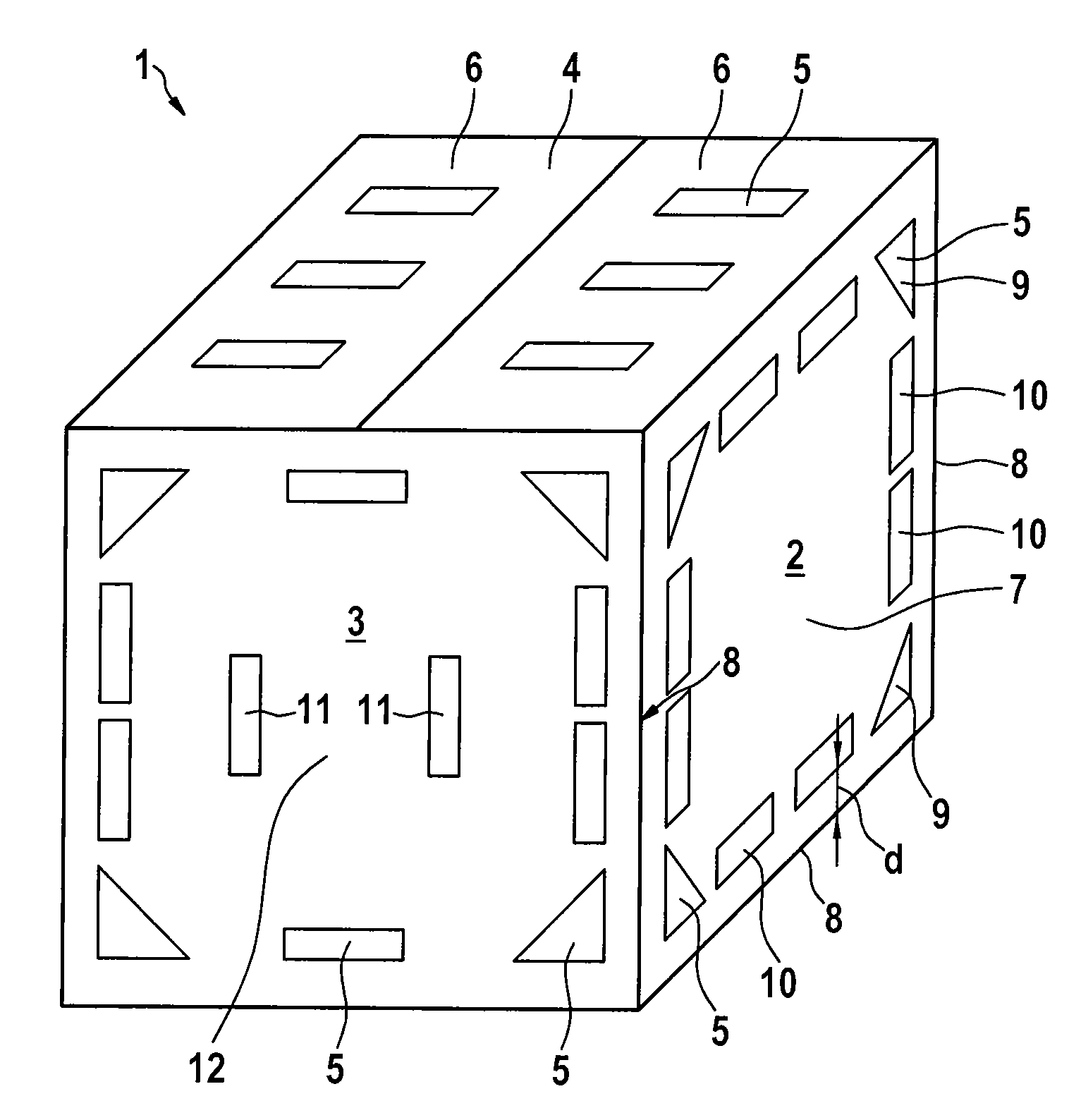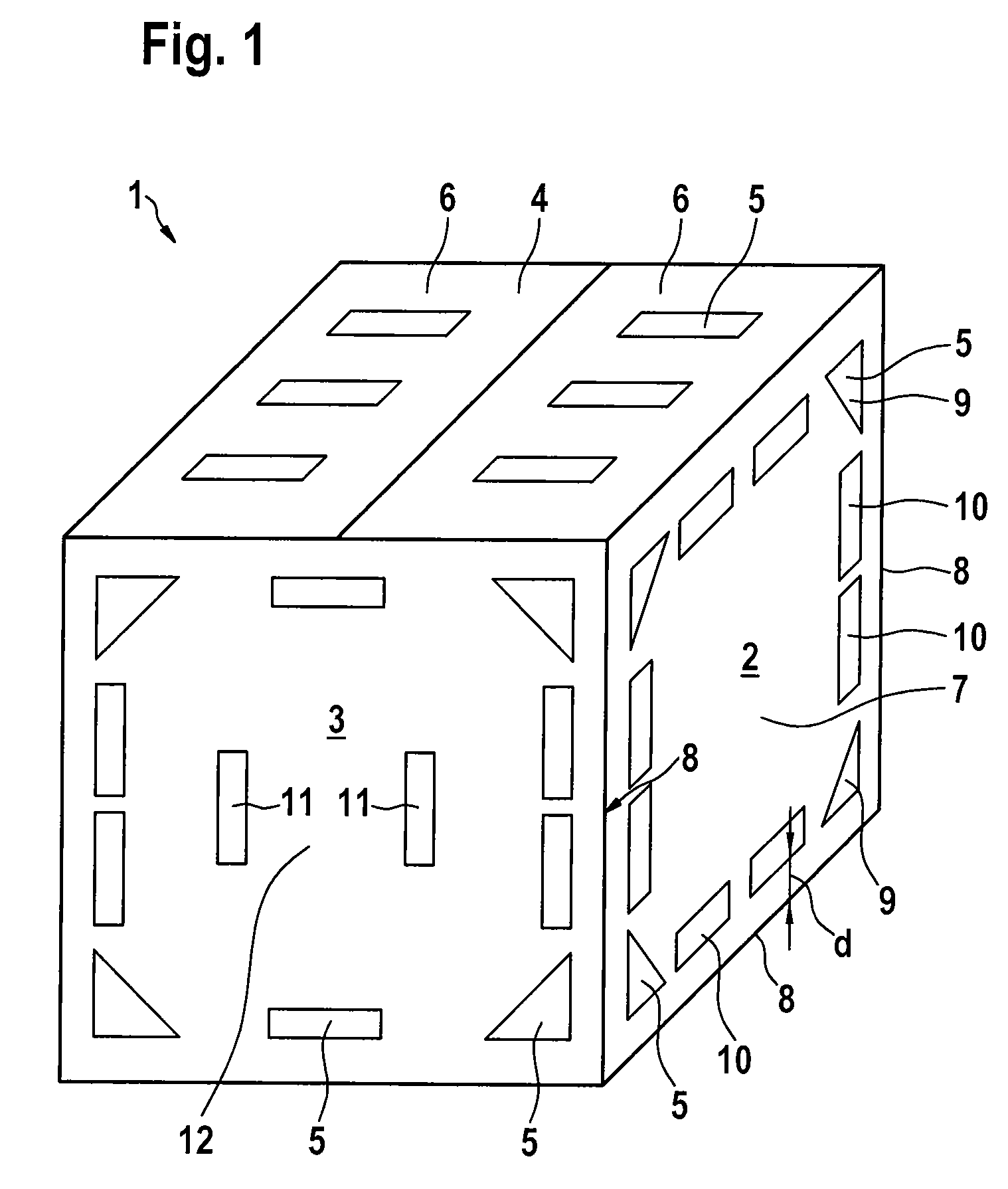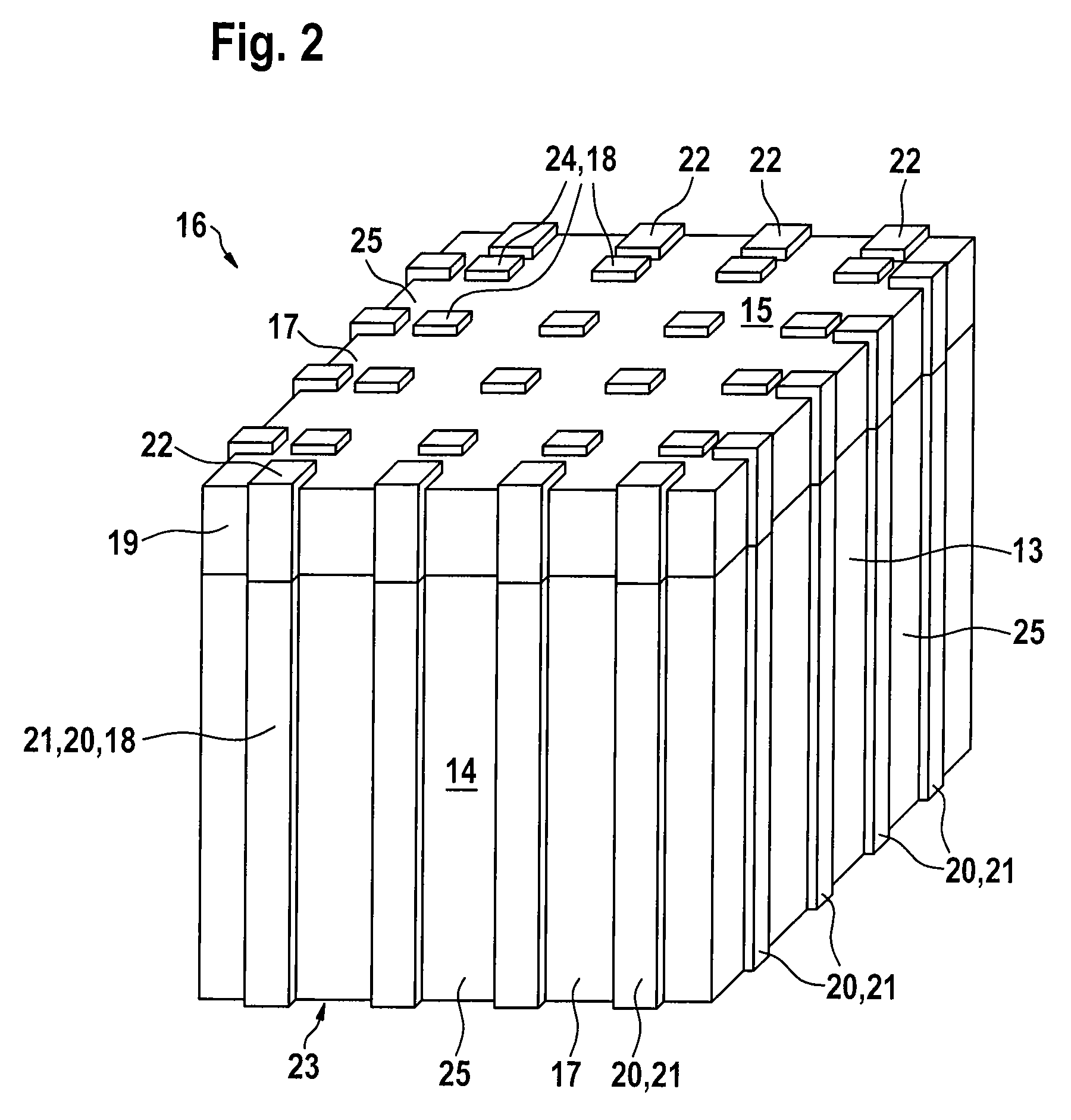Container for transporting cooled goods
- Summary
- Abstract
- Description
- Claims
- Application Information
AI Technical Summary
Benefits of technology
Problems solved by technology
Method used
Image
Examples
examples
[0048]A container according to the present invention with an outer container according to FIG. 1 and an inner container according to FIG. 2 was tested. The inner container was made of polystyrene with the outer dimensions 715×580×640 mm3 including the ribs and had ribs of 10 mm height and 10 mm width arranged on its outer surface. The specific foam weight of the polystyrene was 20 g / l. The outer container was a cardboard box with a plurality of ventilation holes with the outer dimensions 736×597×673 mm3 (quality 2.60 BC). Two tests were carried out with the container according to the invention, the first test within a cold-storage container with an inside temperature of 3.5 to 4° C. and the second test within a room of about 20° C. In both tests the container was filled with 30 kg of dry ice (with a temperature of −78.5° C.). A smaller cardboard box filled with 17 sample packages was placed successively in contact with a) a long side of the container, b) a narrow side of the contain...
PUM
| Property | Measurement | Unit |
|---|---|---|
| Height | aaaaa | aaaaa |
| Height | aaaaa | aaaaa |
| Thermal insulator | aaaaa | aaaaa |
Abstract
Description
Claims
Application Information
 Login to View More
Login to View More - R&D
- Intellectual Property
- Life Sciences
- Materials
- Tech Scout
- Unparalleled Data Quality
- Higher Quality Content
- 60% Fewer Hallucinations
Browse by: Latest US Patents, China's latest patents, Technical Efficacy Thesaurus, Application Domain, Technology Topic, Popular Technical Reports.
© 2025 PatSnap. All rights reserved.Legal|Privacy policy|Modern Slavery Act Transparency Statement|Sitemap|About US| Contact US: help@patsnap.com



